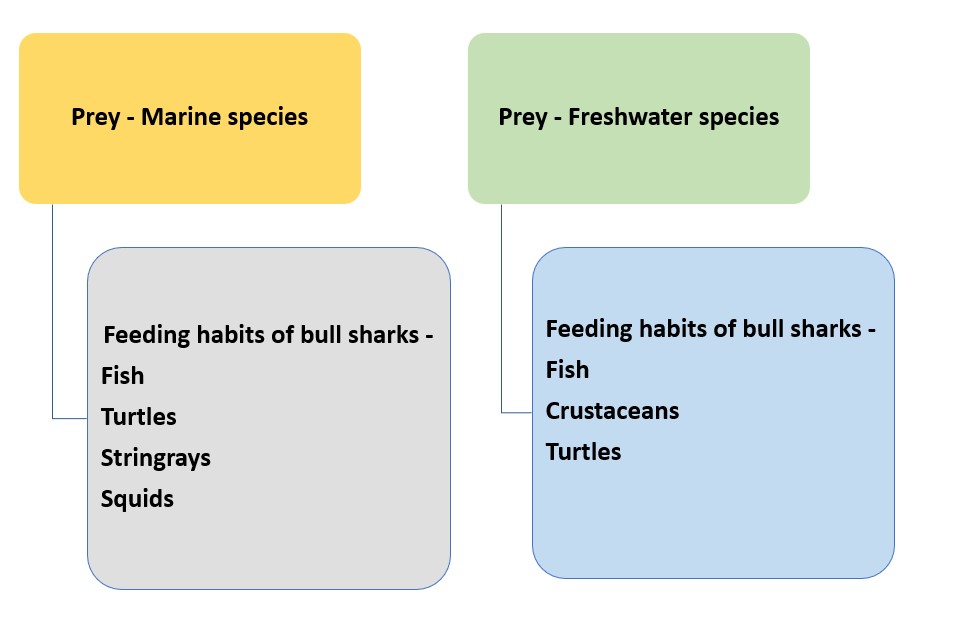
Australia’s coastal waters are the perfect home for the mighty Bull Shark – renowned for their aggression, strength and ability to adapt in both salty and fresh water. These fierce predators prowl the land with powerful jaws and lightning speed, making them one of the most dangerous species around.
The warm waters offer plenty of prey – from fish to turtles and even other sharks – while the diverse ecosystems along the coast provide plenty of shelter. Bull Sharks also have a unique trait of venturing into freshwater rivers and lakes. Thanks to their special physiology, they can tolerate lower salinity levels.
Key Takeaways
- Bull sharks are commonly found in the waters surrounding Australia, particularly in the northern regions.
- They are known for their aggressive behavior and ability to adapt to various environments, including freshwater rivers and estuaries.
- Bull sharks are responsible for a significant number of shark attacks in Australia, making them a potential threat to swimmers and surfers.
- The presence of bull sharks in popular tourist destinations, such as the Great Barrier Reef, highlights the need for caution when engaging in water activities.
- Researchers are studying the behavior and movement patterns of bull sharks to better understand their habits and minimize the risk of encounters with humans.
- The Australian government has implemented measures to mitigate the risk of shark attacks, including shark nets and aerial surveillance.
- It is important for locals and tourists alike to be aware of the potential presence of bull sharks and to follow safety guidelines when swimming or participating in water sports.
- Education and awareness campaigns play a crucial role in informing the public about the risks associated with bull sharks and promoting responsible behavior in the water.
- Despite the potential dangers, bull sharks are an important part of Australia’s marine ecosystem and should be respected and protected.
Overview of Bull Sharks
Bull sharks, also known as Carcharhinus leucas, are famous for their aggression and are aptly named for their muscular build and stocky appearance. Growing up to 11 feet in length and weighing over 500 pounds, these apex predators have the unique ability to thrive in both salt and freshwater environments.
Their diet mainly consists of fish, dolphins, turtles, and even birds, displaying exceptional hunting prowess. As well as physical traits, bull sharks possess remarkable adaptations that allow them to survive in various habitats. They have specialized kidneys which regulate their salt levels, giving them access to diverse food sources and breeding grounds.
To understand the significance of Bull Sharks in Australia, it’s important to recognise their role in balancing fish populations. We must learn about their behaviour and conservation status, and advocate for responsible fishing practices. By joining forces with organisations dedicated to studying and protecting them, we can make a difference and ensure future generations will still witness their awe-inspiring presence in Australia’s waters.
Habitat and Distribution of Bull Sharks in Australia
Bull sharks, found in Australian waters, inhabit a variety of places. From river mouths to estuaries, they are capable of surviving in both freshwater and saltwater. These apex predators are known to frequent the Great Barrier Reef and around Sydney. They have also been found in rivers like the Brisbane River and Swan River in Western Australia.
Close to shorelines, they are often seen swimming. This leads to many encounters with humans. Their tolerance for low salinity allows them to explore further inland in rivers and even lakes. Such adaptability gives them a wide distribution throughout Australia’s coastlines.
A unique adaptation of bull sharks is their circulatory system which enables them to extract oxygen from low-oxygenated waters. This allows them to occupy habitats that other species can’t.
Bull sharks can travel great distances. One individual swam 4,000 kilometers from east coast Australia to Papua New Guinea! This proves that they are not restricted by boundaries and can explore large areas.
The Australian Museum states that bull sharks can be found hundreds of kilometers upriver. This highlights their impressive navigation skills. But don’t be fooled by their smiles! The physical characteristics of these sharks will have you thinking twice about swimming in Australian waters.
Physical Characteristics of Bull Sharks

Look out for bull sharks in Australia – they’ve got unique features that make them stand out! They’re typically around 7 to 11 feet long, with a muscular build and a broad, flat snout that helps them search the sand and shallow waters. Plus, their powerful jaws and sharp teeth give them a strong bite and allow them to take down larger prey.
What really sets bull sharks apart is their ability to tolerate both saltwater and freshwater environments. That means they can thrive in rivers and estuaries – a rarity amongst other shark species. With grey-brown or bluish-grey skin on top and white underneath, they can blend in to any watery background.
And they don’t just stay in the ocean – National Geographic reported that bull sharks have been found over thousands of miles away in the Amazon and Ganges Rivers. That’s pretty impressive, considering they’re apex predators! But beware – bull sharks are fierce creatures, ready to eat anything from birds to humans!
Feeding Habits and Prey of Bull Sharks

Bull sharks have a diverse diet. They are known for being opportunistic predators and target both marine and freshwater species.
| Prey | Marine Species | Freshwater Species |
| Habitat | Oceans, Seas | Rivers, Lakes |
| Food Source | Fish, squid, stingrays, turtles | Fish, crustaceans, turtles |
These predators have been spotted attacking dolphins, seals, and even smaller sharks. In freshwaters, they hunt fish like mullet and catfish. Their ability to adapt lets them survive in both marine and freshwater ecosystems.
A team of researchers observed a bull shark ambush attack on a school of migrating salmon in the Great Barrier Reef. The shark lunged out with lightning-fast speed and caught one salmon in its jaws. This incident shows their hunting skills and agility.
Interaction with Humans: Bull Sharks and Attacks
Bull sharks are known for their interactions with humans. These encounters can be dangerous and have led to fatalities in some cases. People should be aware of the risks and take precautions.
Attacks by bull sharks have occurred worldwide. They are more likely to encounter swimmers, divers, and surfers in coastal areas. But that’s not all! These sharks have the unique ability to survive in both saltwater and freshwater.
Shark attacks are rare, but the consequences can be severe. People should stay informed about the presence of bull sharks and follow local guidelines. This includes avoiding swimming alone or at dawn and dusk, when bull sharks are more active. Shark deterrent devices such as repellent sprays or electronic repellents can also help reduce risk.
In Australia, bull sharks may be terrifying, but thankfully, they are not in charge of conservation efforts or management.
Conservation Efforts and Management of Bull Sharks in Australia

Protecting Bull Sharks in Australia requires various measures. Let’s take a look at the table:
| Conservation Measures | Description |
|---|---|
| Fishing restrictions | Limits to prevent overfishing. |
| Marine Protected Areas | Areas where sharks are safe. |
| Research and monitoring | Collecting data on bull shark populations. |
| Public awareness campaigns | Raising awareness about conserving bull sharks. |
Plus, some local communities have teamed up with conservation orgs to promote observing bull sharks in their natural habitat. To keep these efforts going, individuals and communities must take part. Support organizations, join educational programs, and be an advocate for sustainable practices.
Let’s ensure a brighter future for these creatures and our oceans! Despite their fearsome reputation, Bull Sharks in Australia prove that something more terrifying lurks beneath the surface.
Frequently Asked Questions
1. Are bull sharks dangerous in Australia?
Yes, bull sharks are considered one of the most dangerous shark species in Australia. They have a reputation for aggressive behavior and are responsible for numerous attacks on humans in coastal areas.
2. Where can bull sharks be found in Australia?
Bull sharks are commonly found in various coastal regions of Australia. They inhabit not only the ocean but also rivers, estuaries, and even freshwater bodies such as rivers and lakes, thanks to their ability to tolerate low salinity levels.
3. How big can bull sharks get in Australia?
Bull sharks can grow to impressive sizes in Australia, typically reaching an average length of 7 to 9 feet (2.1 to 2.7 meters). However, some individuals have been known to exceed 11 feet (3.4 meters) in length.
4. Are bull sharks commonly encountered by swimmers in Australia?
While bull sharks are known to frequent coastal areas, encounters with swimmers are relatively rare. However, it is essential to be cautious when swimming in waters where bull sharks may be present, particularly in river mouths or areas near their breeding grounds.
5. What do bull sharks eat in Australia?
Bull sharks have a diverse diet that includes fish, rays, turtles, dolphins, and even other sharks. In Australia, they are opportunistic predators known to adapt their diet based on available food sources in their habitat.
6. Can bull sharks survive in freshwater in Australia?
Yes, bull sharks can tolerate and survive in freshwater in Australia. They have a unique ability to regulate their internal salt levels, allowing them to thrive in both marine and freshwater environments.
Conclusion
Bull Sharks in Australia are a huge risk to humans and marine life. They are adaptive and have an aggressive nature. It’s important for people to take precautions to stay safe and protect the ocean.
More incidents are happening involving Bull Sharks, so it is essential that we learn more. We must spend resources on research and education to better understand the sharks and find better ways to stop them.
Experts, governments, and people living close to the water must team up and share information. Then, we can make plans to reduce shark attacks and keep them living safely in their homes.


